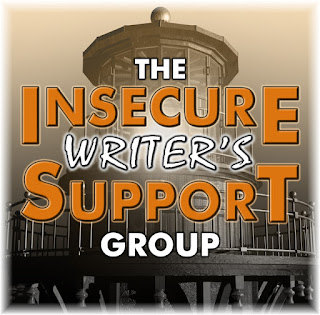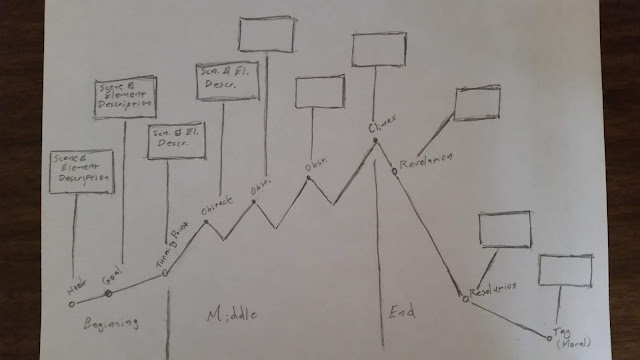It’s the first Wednesday of the month and so it’s time for another Insecure Writers Support Group (IWSG) post! In an IWSG post, we writers bring our writing challenges and problems out into the open to share with each other and try to offer solutions.
Currently I’ve been working on revisions for the first novella that I’ve ever wrote. Because a novella is basically a short novel, it’s also the first novel that I’ve ever written. Being mostly a short story writer, revising this novella has been more of a challenge for me because it involves so many more details and elements that go into writing it. When I revise a scene and set it aside for the night, the next day I’ll realise that something in that scene contradicts an earlier one. Also, because the work is so much longer than what I normally write, it’s easy to forget details so harder for me to look at the work as a whole to see if there are any details or scenes that don’t belong in the story or that are lacking in it. I wrote an outline for the novella before I started the draft several years ago (during a NaNoWriMo). However, when I started revising, the story developed in a different direction. But instead of just making a new outline I wanted to see if I could do something more visual, myself being a visual person.
So I did some research and came across a “Writer’s Digest” download that talks about how to keep track of your novel’s structure and organisation. One thing it mentions that’s been helping me is what is called a story map. A story map is basically an outline to a story only it’s more visual since it consists of graph-like lines and other marks that indicate where certain types of scenes and elements should go. For example, the hook element goes at the beginning of the story and so comes first on the map. After that is the goal element where we learn the main character’s goal for the story which is also revealed in the beginning scene.
Each of these elements on the map are marked and labeled as such. Each one is also written with a description next to it specifying the scene and action that’s taking place. For example, for my novella, a science fiction horror about murderers who closely resemble an online game’s avatars, for the hook that opens the story I describe the scene as “A monster lops off the heads of two con attendees.” This description specifies the action and indicates the location which is a gaming convention. Describing this part of the story as such rather than just giving a vague description, such as “a monster kills two people”, helps give a clearer picture of the story and action.
So far, the most this map has helped me with is to realise that there was a whole murder scene that I could take out because it was unrelated to the manner of the series of killings in the story. Anyway, the whole outline of the map is divided and organized as illustrated below:
So if you’re like me and struggle with writing a novel because you have a hard time seeing the whole story and the direction it’s going in, then you might want to try a story map similar to the above. Have you used story maps or similar outlines for writing your novel or long work of fiction?
Today’s IWSG is brought to you by these super co-hosts: Pat Garcia, J.Q. Rose, and Natalie Aguirre! IWSG was founded by awesome author Alex Cavanaugh, writer of the Cassa Series of novels!
Until next time . . .


I'm a detailed outliner, but a story map on top of it would help.
ReplyDeleteThey help especially on the visual side of things.
DeleteThank you for the story map. I'm going to look it up because timeline and structure are tough for me. Congrats on writing your novel! Keep writing! Thanks for stopping by my blog. I sent you a "prize" via FB messenger.
ReplyDeleteJQ Rose
That's really nice, JQ, thanks! I'll look out for it.
DeleteI'm a pantser, but for my current WIP, I'm using a genre-specific outline to help me organize the story. This book is in a genre that I've never written before, so guidance is good.
ReplyDeleteI can imagine something like that can be helpful when you're not familiar with the genre.
Delete